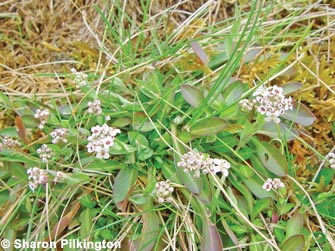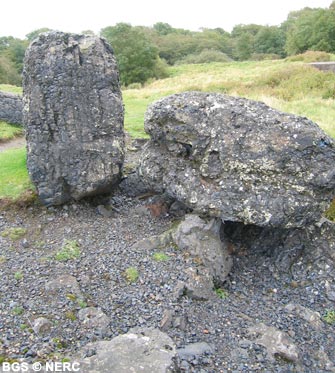
Special Mendip habitats
Introduction | Limestone cliffs, crags, caves and screes | Limestone heath | Old lead workings | Ash-lime woodland
Old lead workings

The spoil heaps produced by the lead mining industry provide a particularly distinctive Mendip habitat. High levels of lead, cadmium and especially zinc are toxic to most plant species, and make growing conditions even more hostile. In addition, the black glassy slag of re-worked lead spoil readily absorbs solar radiation causing extreme temperature variations, and retains few nutrients and little organic matter and water. Furthermore, the steeper slopes of some spoil heaps are intrinsically unstable.

The vegetation cover of the most contaminated soils tends to be very sparse until some of the toxic elements such as lead and zinc have been removed by metal-tolerant ‘pioneer’ species. A few of these, known as bioaccumulators, absorb high levels of zinc within their tissues, whereas others are metal-tolerant strains of common and widespread species. These metal rich habitats contain spring sandwort, alpine penny-cress, sheep's-fescue, common bent and many small lichens. Once soil toxicity has fallen, other species are able to colonise the spoil heaps, including common sorrel, common bird's-foot-trefoil and early forget-me-not. Old lead workings can be seen in the nature reserves at Priddy Mineries, Blackmoor, Ubley Warren and Velvet Bottom.
- Home
- Overview maps
- Locality
areas
- Cheddar Gorge
- Charterhouse
- Blackdown
- Burrington Combe
- Shipham & Rowberrow
- Crook Peak & Axbridge
- Banwell to Churchill
- Priddy
- Harptree & Smitham Hill
- Draycott & Westbury-sub-Mendip
- Wookey Hole & Ebbor Gorge
- Wells
- Great Elm & Vallis Vale
- Mells & the Wadbury Valley
- The Vobster area
- The Whatley area
- Torr Works & Asham Wood
- Beacon Hill
- Stoke St Michael & Oakhill
- Holwell & Nunney
- Shepton Mallet & Maesbury
- Gurney Slade & Emborough
- The Nettlebridge valley
- Geology
- Minerals and mines
- Quarrying
- Caves and karst
- Biodiversity
- Detailed site information
- Acknowledgements
- External links
- Search
- Site map